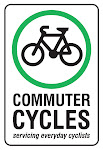
Our ongoing ‘How To’ series which to date has helped readers travel from Gyeongju to Busan by train and to stealth camp in Mongolia, now turns to cycle tourist identification.
Why would you want to spot a cycle tourist?
If you yourself are a cycle tourist, especially one in a more remote setting, the prospect of meeting another of your ilk is ever-so appealing. If not a bike traveler, you may yearn for these skills in order to welcome in passing riders, fend off would-be stealth campers from your plot or avoid a prolonged tedious conversation in your broken native tongue. If you are a South Korean ticket inspector working on the Gyeongju to Busan train it goes without saying why this talent would be beneficial.













